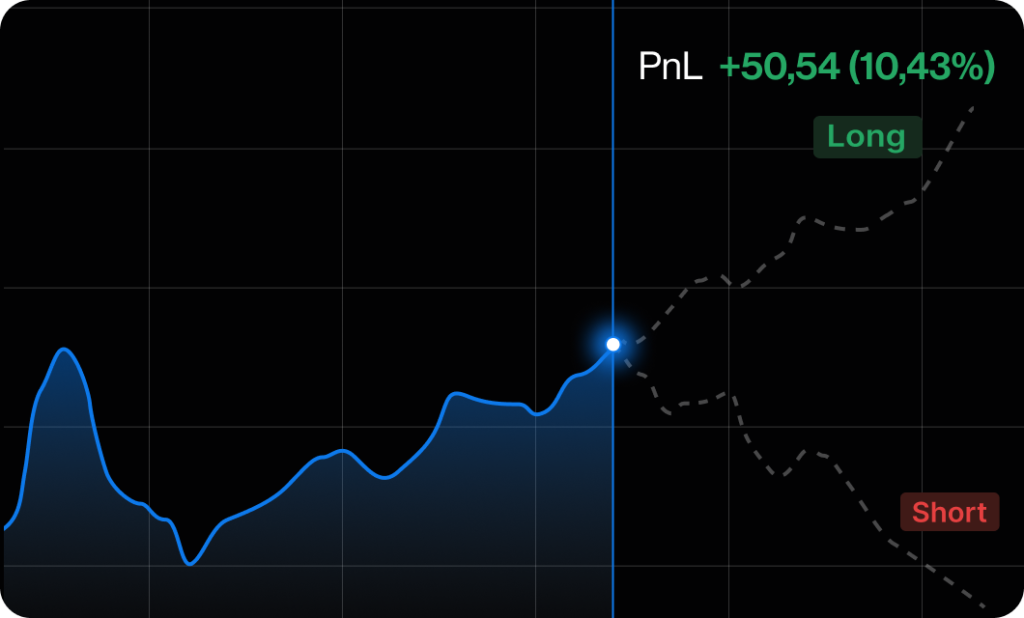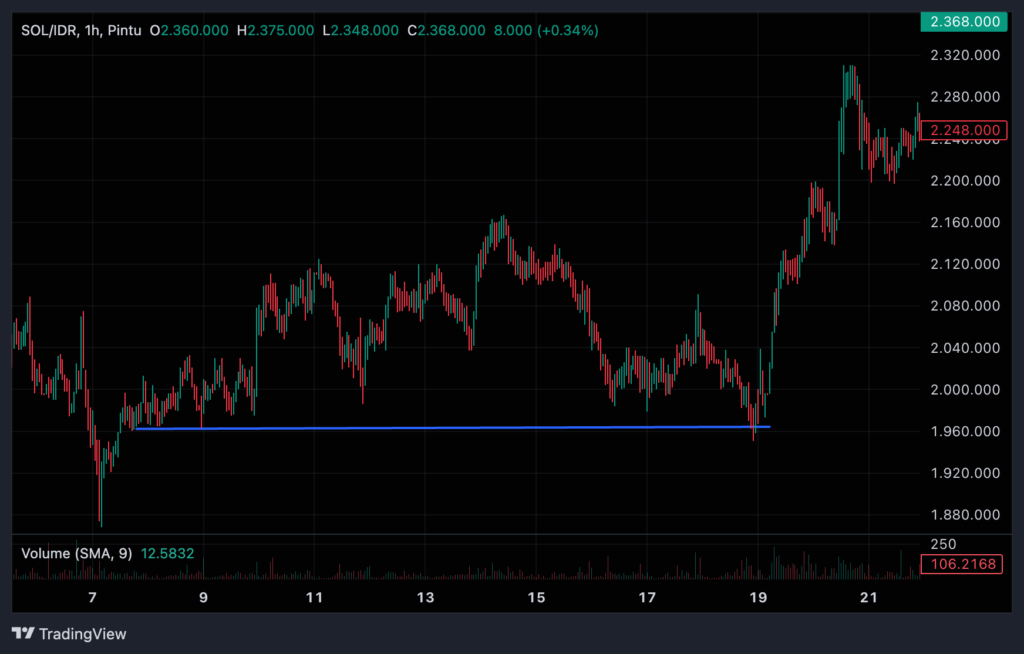Tips & Strategies in Perpetual Trading

Perpetual trading allows traders to make large profits, whether the price increases or decreases. However, it can be challenging, especially for beginner traders. By understanding key tips and avoiding common mistakes, you can improve your performance in perpetual trading. Moreover, there are three perpetual trading strategies that you should try! Let’s find out more in the following article.
Article Summary
- 🚀 Perpetual trading allows traders to earn profit in a bull or bear market by speculating on its price movements.
- 💡 Tips for perpetual trading include making a clear trading plan, pace your trading, thinking both ways and learning from margin calls.
- 🔭 There are three strategies that can be used to increase the chances of winning in perpetual trading: pullback, breakout, and trend-following strategies.
- ❌ Beginner traders in perpetual trading often make mistakes such as overusing leverage, neglecting stop-loss, ignoring fees, overtrading, and being unrealistic.
About Perpetual Trading
Perpetual futures is a type of derivative that allows traders to speculate on the price movement of an underlying asset, in this case cryptocurrency, without any expiration date or deadline. Unlike spot markets, where traders can only profit from the price increases, perpetual markets allow traders to profit whether the market goes up or down.
Perpetual trading offers the potential for profit in both bullish and bearish markets. If a trader believes the asset’s price will rise, they can open a long position. Meanwhile, they can open a short position if they think the asset’s price will drop.
Perpetual trading supports leverage, which can amplify a trader’s profit potential. But on the one hand, leverage also comes with a high risk of liquidation.
Learn more about perpetual trading and how it works in the following article.
Perpetual Trading Tips
Here are some tips that can be implemented when trying out perpetual trading:
1. A Clear Trading Plan
Just like spot trading, perpetual trading requires a well-defined trading plan. This plan should focus on profit targets and outline exit strategies for when the market moves against your expectations.
When creating a trading plan, avoid making decisions based on emotions. This means avoiding the temptation to hold onto losing positions for too long out of fear or taking profits too early due to greed. Set clear parameters and price targets based on your analysis before entering a trade.
Another common issue with trading plans is a lack of commitment to execute them. Many traders rely on “mental stops,” setting price targets in their minds for closing positions. However, these “mental stops” are often ignored in practice, leading to larger losses.
When developing a trading plan, ensure you have risk management tools, such as bracket orders, to optimize your trading outcomes. Bracket orders essentially consist of stop-loss and take-profit orders.
For example, if you buy ETH at $2,500, you can set a stop-loss at $2,250 and a take-profit at $3,000. This way, you can limit your potential loss to $250 and target a profit of $500.
2. Pace Your Trading
If you’re new to perpetual trading, don’t dive in headfirst. Avoid opening multiple positions right away. Another common mistake is risking your entire capital on one or more positions. Start with a smaller amount of capital and a lower leverage level.
Losses are inevitable in trading. Therefore, avoid opening too many positions or risking too much capital. If you use significant capital, one or two bad trades can wipe out your entire account. Having too many open positions also requires more monitoring and can be stressful.
It’s better to start trading slowly. While starting, take the time to learn the mechanics and dynamics of perpetual trading. Additionally, experiment with various strategies and methods until you find the best. Only then should you consider increasing your capital and leverage.
3. Think Long and Short
Generally, traders will be more eager to trade when the market is bullish. Once the market reverses, they will stay away from it until things improve. However, remember that perpetual markets also provide the opportunity to make a profit even when the market is bearish.

So, if a trader doesn’t think both ways, they will miss the opportunity to make a profit by going short. Traders must possess good analytical skills to interpret correction trends and seize reading opportunities. However, it’s crucial to note that shorting carries significant risk due to the lack of a theoretical limit on price increases.
4. Learn from Margin Calls
In perpetual trading, there’s a feature known as a margin call. If a trader receives a margin call, they’ve likely held a losing position for too long. Essentially, a margin call is a warning that the position opened is no longer going as planned.
To address this issue, traders can add more margin to reduce their margin usage. However, this isn’t always the best approach. There’s no guarantee that the trend will reverse after adding more margin. In the worst-case scenario, the trend continues, and the trader will receive another margin call.
So, traders should close the losing position instead of adding more margin to reduce their margin usage. Then, the funds intended to add margin can be used to find the next trading opportunity.
Trading in a sideways market presents unique challenges. Learn the following five tips to maximize your results.
Perpetual Trading Strategies
The following are some of the commonly used strategies in perpetual trading:
1. Trend Following & Swing Trading Combination
The following strategy is trend following, one of the most common trading strategies. This strategy aims to identify the current price trend and then follow the potential direction of the price movement.
Moving averages and the relative strength index are the most valuable technical indicators for identifying trends. Using these indicators, traders then look for an asset’s strong support and resistance levels. Ensure that these points are areas where the price changes trend.
If the analysis shows that the price will be in an uptrend, traders can immediately open a long position. Meanwhile, traders open a short position if the price shows a downward trend.
Another indicator that can signal trend movement is sentiment or news related to the asset. If there is positive news or sentiment, the price can immediately jump up, providing an opportunity to open a long position. The opposite is also true.
Since the reversal can happens any time, traders should use a stop-loss order. If the price trend reverses, this order can prevent traders from incurring significant losses.
2. Pullback Strategy
Pullbacks are often used to find entry points in perpetual trading. A pullback typically occurs when traders start taking profits, causing the futures price to move against the initial breakout trend.
However, this condition presents an entry opportunity for traders who missed the initial move. They can wait for the price to pull back and enter at a more favorable price. The influx of new traders during a pullback can propel the price to continue its trend.

In an uptrend market, a pullback happens when the price breaks above resistance but then retraces to retest that resistance level. If the price fails to break below the resistance level, it becomes a support level. Once confirmed, traders can open a long position and expect the price to continue to rise.
While in a downtrend, a pullback occurs when the price drops past the support point but rebounds and tests the support level. When a pullback occurs, and the asset fails to pass the support level, the level changes to a resistance level. This point can be used as an entry point for short positions because the price is expected to continue to fall.
3. Breakout Strategy
The following strategy involves capitalizing on breakout points as entry signals. A breakout occurs when an asset’s price successfully moves beyond a previously established trading range. This strategy aims to leverage market volatility when the price breaks through support or resistance levels, trendlines, or other technical indicators.
A breakout should be followed by increased trading volume for a more accurate signal. One technical indicator that can be used to predict breakout points is Fibonacci retracement.

The 0.5 Fibonacci level on the SOL/IDR chart above is crucial. Initially, the price of SOL failed to break above this level, making it a strong resistance level. This level was successfully broken in the next move, resulting in a breakout. Traders can then immediately open a long position at the 0.5 Fibonacci level.
After a breakout occurs, the market will experience high volatility. This is due to the many pending orders that are immediately executed. Traders can take advantage of this increased volatility by taking positions toward the breakout.
Generally, traders will open a short position when the price breaks below a support level. They will open a long position when the price breaks above a resistance level.
Learn how to use fibonacci retracement in trading in the following article.
Common Mistakes in Perpetual Trading
The following are some common mistakes that traders, especially beginners, often make when doing perpetual trading. Knowing these mistakes will help beginners to trade more wisely.
- ☠️ Overusing leverage. Using a high level of leverage in the hope that the potential profits earned will be greater. The higher the leverage, the higher the risk. An adverse market movement can wipe out your entire fund.
- ⛔ Not utilizing stop-loss. Traders do not set stop-loss to close losing positions automatically. Without stop-losses, traders have no safety net in case the market reverses, risking larger losses.
- 💸 Ignoring fees. In perpetual trading, there are fees such as funding rates or transaction fees. Holding positions for too long or repeatedly opening and closing positions can add costs that eating your profits.
- 😵 Overtrading. Overtrading can happened when trader chasing losses or as simply too much excitement or impatience. Overtrading can lead to more fees, increased risk, and mental fatigue.
- 🤑 Setting unrealistic expectations. Expecting perpetual trading to provide continuous wins or get rich quickly. This mentality can lead to huge disappointments or impulsive decision-making. Losing and winning in perpetual trading is normal.
Conclusion
Perpetual trading allows traders to make a profit from bull and bear markets. Additionally, the use of leverage can amplify their potential gains. However, these benefits come with significant risks. A wrong move can lead to liquidation, resulting in the loss of the entire trading account.
There are three strategies that can increase the probability of success in perpetual trading: pullback, breakout, and trend following. To mitigate risks and avoid getting caught in unfavorable positions, traders should implement four key tips: a clear trading plan, pace your trading, think long and short, and learn from margin calls.
Buy Crypto Assets on Pintu
Looking to invest in crypto assets? No worries, you can safely and conveniently purchase a wide range of cryptocurrencies such as BTC, ETH, SOL, and others safely and easily at Pintu. Pintu diligently evaluates all its crypto assets, highlighting the significance of being cautious.
Pintu is also compatible with popular wallets such as Metamask to facilitate your transactions. Download Pintu app on Play Store and App Store! Your security is guaranteed because Pintu is regulated and supervised by Bappebti and Kominfo.
Aside from buying and trading crypto assets, you can expand your knowledge about cryptocurrencies through various Pintu Academy articles. Updated weekly, all Pintu Academy articles are made for knowledge and educational purposes, not as financial advice
References
- Guneet Kaur, Crypto derivatives 101: A beginner’s guide on crypto futures, crypto options and perpetual contracts, Coin Telegraph, accessed on 27 September 2024.
- Chaindebrief, A Beginners Guide to Crypto Futures and Perpetual Trading, accessed on 27 September 2024.
- Charles Munyi, Best Futures Trading Strategies in 2024, Benzinga, 27 September 2024.
Share


